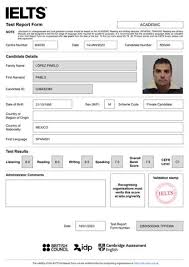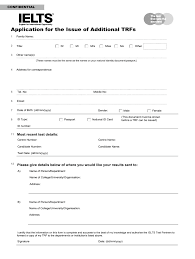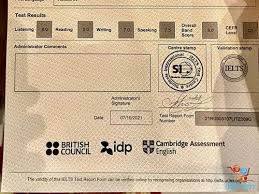Ielts Certificate, The IELTS certificate is an essential credential for anyone aiming to study, work, or migrate to an English-speaking country. The International English Language Testing System (IELTS) is one of the most recognized and respected English proficiency tests worldwide. In this article, we will explore what an IELTS certificate is, its significance, how to obtain it, and why it might be the key to unlocking your future opportunities.
What Is an IELTS Certificate?
An IELTS certificate is a document that verifies a candidate’s English language proficiency across four key areas: Listening, Reading, Writing, and Speaking. The certificate is issued after completing the IELTS test, which is jointly managed by the British Council, IDP: IELTS Australia, and Cambridge Assessment English.
The IELTS test is available in two versions:
- IELTS Academic: This version is designed for those who wish to pursue higher education or professional registration in an English-speaking environment.
- IELTS General Training: This version is intended for those who want to work, train, or migrate to an English-speaking country.
Why Is the IELTS Certificate Important?
The IELTS certificate is recognized by over 10,000 organizations in more than 140 countries, including universities, employers, immigration authorities, and professional bodies. Here are some reasons why the IELTS certificate is crucial:
- Global Recognition: IELTS is accepted by institutions and organizations worldwide, making it a reliable measure of your English proficiency.
- Migration Requirements: Many countries, including Australia, Canada, New Zealand, and the UK, require an IELTS certificate for visa applications.
- Educational Purposes: Universities and colleges in English-speaking countries often require an IELTS certificate as proof of language skills for admission.
- Professional Opportunities: For professionals seeking registration or employment in English-speaking environments, an IELTS certificate can be a critical requirement.
How to Obtain an IELTS Certificate
To obtain an IELTS certificate, you need to take the IELTS test. Here’s a step-by-step guide:
- Registration: Register for the IELTS test through the official IELTS website or an authorized test center. You can choose a test date and location that suits you.
- Preparation: Adequate preparation is crucial for achieving a high band score. Numerous resources are available, including official IELTS preparation materials, online courses, and practice tests.
- Taking the Test: On the test day, you will complete four sections—Listening, Reading, Writing, and Speaking. The test takes around 2 hours and 45 minutes.
- Receiving Your Results: Results are usually available within 13 days of taking the test. Your IELTS certificate will include your scores for each section and an overall band score.
- Validity: The IELTS certificate is valid for two years from the date of the test. After this period, you may need to retake the test if required for visa, employment, or educational purposes.
Tips for Success
Achieving a good score on the IELTS test requires preparation and strategy. Here are some tips to help you succeed:
- Understand the Format: Familiarize yourself with the test format and question types for each section.
- Practice Regularly: Consistent practice can improve your listening, reading, writing, and speaking skills.
- Time Management: Learn to manage your time effectively during the test to ensure you complete all sections.
- Use Official Resources: Utilize official IELTS preparation materials for accurate practice.
Conclusion
An IELTS certificate is more than just a piece of paper; it is a gateway to new opportunities in education, career, and life abroad. Whether you are aiming to study at a prestigious university, migrate to a new country, or advance your professional career, obtaining an IELTS certificate can help you achieve your goals. By preparing thoroughly and understanding the test requirements, you can maximize your chances of success and take a significant step toward your future aspirations.



